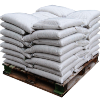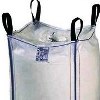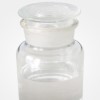| We offer Halal and Kosher Caprylic Acid or Octanoic Acid made in an ISO9001, ISO22000 (FSSC22000) and cGMP certified facility, Anmol Chemicals a mubygroup company involved in manufacturer of Speciality Chemicals, Pharmaceutical Excipients, Fragrance Food & Flavor chemicals. The group has several manufacturing facilities spread across the world, supported by toll manufacturers and representatives in UAE, Europe, Africa USA & china. |
| The units in the group have one or more of the certifications like FDA GMP-GLP, ISO 9001, ISO 22000, HACCP, REACH, Kosher & Halal and DMF support is available. |





Caprylic Acid or Octanoic Acid MSDS SDS GHS of Manufacturers
Caprylic Acid or Octanoic Acid Pure USP NF Grade Manufacturers Exporters
Caprylic acid or Octanoic acid: CAS Number: 124-07-2
Caprylic acid or Octanoic acid SDS, Safety Data Sheet
MSDS Sheet, Material Safety Data Sheet 14-Feb-22
1. Product Identification
Product Name & Other Names: Caprylic acid or Octanoic acid.
CAS No.: 124-07-2
EINECS EC Number: 204-677-5
Relevant uses and uses advised against (if any): Laboratory and Industrial Use.
Supplier: As per letterhead.
2. Hazards Identification
GHS, Globally Harmonized System Classification in accordance with 29 CFR 1910
Classification according to Regulation (EC) No 1272/2008
Skin corrosion (Category 1B) H314
Labeling according to GHS USA & Regulation (EC) No 1272/2008
GHS Label Elements  Corrosive |
Signal Words: Danger
Hazard Statements:
H314: Causes severe skin burns and eye damage.
Precautionary Statements:
P260: Do not breathe dust/fume/gas/mist/vapors/spray.
P264: Wash contaminated parts thoroughly after handling.
P270: Do not eat, drink or smoke when using this product.
P280: Wear protective gloves/protective clothing/eye protection/face protection.
P312: Call a POISON CENTER or doctor/physician if you feel unwell.
P302+352: IF ON SKIN: Wash with plenty of soap and water.
P304 + P340 + P312: IF INHALED: Remove person to fresh air and keep comfortable for breathing. Call a POISON CENTER/doctor if you feel unwell.
P305 + P351 + P338 IF IN EYES: Rinse cautiously with water for several minutes. Remove contact lenses, if present and easy to do. Continue rinsing.
P333+313: If skin irritation or a rash occurs: Get medical advice/attention.
P403+233+235: Store in a well-ventilated place. Keep container tightly closed. Keep cool.
3. Composition/Information on Ingredients
Product Name & Other Names: Caprylic acid or Octanoic acid.
CAS No.: 124-07-2
EINECS EC Number: 204-677-5
4. First Aid Measures
Always seek medical attention after first aid measures are provided.
Inhalation: Remove to fresh air. If not breathing, give artificial respiration. If breathing is difficult, give oxygen. Do not use mouth-to-mouth method if victim inhaled the substance. Induce artificial respiration with the aid of a pocket mask equipped with a one-way valve or other proper respiratory medical device. Get medical attention.
Ingestion: Rinse mouth. Do not induce vomiting without medical advice. If vomiting occurs naturally, have victim lean forward to reduce risk of aspiration. Never give anything by mouth to a victim who is unconscious or is having convulsions. Get medical attention.
Skin Contact: Wipe off excess material from skin then immediately flush skin with plenty of water for at least 15 minutes. Use a mild soap if available. Remove contaminated clothing and shoes. Get medical attention. Wash clothing before reuse. Thoroughly clean shoes before reuse. For minor skin contact, avoid spreading material on unaffected skin.
Eye Contact: Immediately flush eyes with plenty of water for at least 15 minutes, lifting lower and upper eyelids occasionally. Get medical attention immediately.
5. Fire Fighting Measures
Flash Point: 130C.
Products of Combustion: Carbon oxides and fumes.
Fire Extinguishing Media: Water spray. Alcohol foam. Polymer foam. Dry chemical powder. Carbon dioxide (CO2). Avoid a solid water stream as it may scatter and spread fire. Fire residues and contaminated fire extinguishing water must be disposed of in accordance with local regulations. In the event of fire and/or explosion do not breathe fumes.
Extinguishing Media Not recommended: Avoid using solid water jet as it may scatter the fire.
Special Information: In the event of a fire, wear full protective clothing and NIOSH-approved self-contained breathing apparatus with full face piece operated in the pressure demand or other positive pressure mode. At high temperatures under fire conditions, it may produce toxic or irritating fumes. Fire-extinguishing work is done from the windward and the suitable fire-extinguishing method according to the surrounding situation is used. Uninvolved persons should evacuate to a safe place.
6. Accidental Release Measures
Personal precautions, protective equipment, and emergency procedures: Avoid breathing dust/fumes/gas/mist/vapors/spray. Use individual protective equipment (waterproof boots, suitable protective clothing, safety glasses, etc.). Restrict unprotected personnel from the area. Prevent any contact with hot surfaces. Do not approach facing the wind. Do not touch the spilled material.
Environmental precautions: Do not let the product enter drains, soil, or water sources.
Methods and materials used for containment Cleanup procedures and Storage: Do not inhale dust, vapors, mist, or gas. Avoid dust formation. Contain spilled material. Cover with an inert, non-combustible absorbent material, (e.g. sand, earth, diatomaceous earth, vermiculite). Use a shovel to put the material into a convenient waste disposal container. Finish cleaning by spreading water on the contaminated surface and allow to evacuate as per law.
7. Handling and Storage
Precautions for safe handling: Keep away from sources of ignition - No smoking. Take measures to prevent the build-up of electrostatic charge. Do not handle or store near an open flame, heat, or other sources of ignition. All equipment used when handling the product must be grounded. Use only under a chemical fume hood. Apply according to good manufacturing and industrial hygiene practices. Ensure proper ventilation. Wash thoroughly after handling. Do not drink, eat, or smoke while handling. Avoid contact with skin, eyes, and clothing. Minimize dust generation. Avoid breathing dust/fumes/gas/mist/vapors/spray. Use individual protective equipment (waterproof boots, suitable protective clothing, safety glasses, etc.). Prevent any contact with hot surfaces. Avoid prolonged exposure. Do not empty into drains. Avoid release to the environment.
Conditions for safe storage, including any incompatibilities: Store in cool, dry, and ventilated area away from heat sources and protected from sunlight in tightly closed original container. Keep air contact to a minimum. Do not leave the material container open. Store protected from heat, sparks and ignition sources and incompatible materials. Do not store with incompatible materials like oxidizing agents, strong bases.
8. Exposure Controls/Personal Protection
Airborne Exposure Limits: Contains no substances with occupational exposure limit values.
Ventilation System: A system of local and/or general exhaust is recommended to keep employee exposures as low as possible. Local exhaust ventilation is generally preferred because it can control the emissions of the contaminant at its source, preventing dispersion of it into the general work area.
Personal Respirators (NIOSH Approved): For conditions of use where exposure to dust or mist is apparent and engineering controls are not feasible, a particulate respirator may be worn. For emergencies or instances where the exposure levels are not known, use a full-face positive-pressure, air-supplied respirator.
Skin Protection: Wear protective gloves and clean body-covering clothing.
Eye Protection: Use chemical safety goggles and/or full face shield where dusting or splashing of solutions is possible. Maintain eye wash fountain and quick-drench facilities in work area.
Other Control Measures: Maintain good housekeeping in work area.
9. Physical and Chemical Properties
Appearance: Oily clear, colorless to slightly yellowish liquid.
Odor: Faint, fruity acid; irritating.
Odor threshold: Not available.
pH: Not available.
Relative density: about 0.91
Boiling point: 240C literature.
Melting point/Freezing point: 16C to 17C literature.
Flash Point: 130C.
Auto-ignition Temperature: 440C.
Decomposition temperature: Not available.
Upper/lower flammability or explosive limits: Not available.
Vapor pressure: Not available.
Vapor density: Not available.
Evaporation rate: Not available.
Flammability (solid, gas): Not available.
Partition coefficient: n-octanol/water: Not available.
Solubility (water): Minimally soluble in water.
Viscosity: Not available.
10. Stability and Reactivity
Stability: It is stable under ordinary conditions of use and storage.
Hazardous Decomposition Products: It emits carbon oxides and fumes when heated to decomposition.
Hazardous Polymerization: Will not occur.
Incompatibilities: Oxidizing agents, strong bases.
Conditions to Avoid: Avoid light, heat, sparks, open flames, and other ignition sources. Contact with incompatible materials.
11. Toxicological Information
Toxicity data:
LD50 Oral - Rat - >2000 mg/kg.
LD50 Dermal - Rabbit - >5000 mg/kg for dry material.
Carcinogenicity: Not expected to be hazardous by IARC, NTP, ACGIH and OSHA criteria.
Mutagenic Effects: No data found.
Reproductive Effects: No data found.
Developmental Effects: No data found.
Teratogenicity: No data found.
12. Ecological Information
Toxicity to fish: static test LC50 - Lepomis macrochirus (Bluegill sunfish) - 22 mg/l - 96 h.
Toxicity to daphnia and other aquatic invertebrates: static test EC50 - Daphnia magna (Water flea) - > 21 mg/l - 48 h.
Persistence and degradability: Degradable.
Mobility in soil: Likely to be mobile.
Results of PBT and vPvB assessment: Not available.
13. Disposal Considerations
Whatever cannot be saved for recovery or recycling should be managed in an appropriate and approved waste disposal facility.
14. Transport Information
Department of Transportation DOT USA, TDG Canada & ADR/RID Europe:
UN-No UN3265
Proper Shipping Name: Corrosive liquid, acidic, organic, n.o.s. (Octanoic acid).
Hazard Class 8; Packing Group III.
IMDG/IMO:
UN-No UN3265
Proper Shipping Name: Corrosive liquid, acidic, organic, n.o.s. (Octanoic acid).
Hazard Class 8; Packing Group III.
ICAO/IATA:
UN-No UN3265
Proper Shipping Name: Corrosive liquid, acidic, organic, n.o.s. (Octanoic acid).
Hazard Class 8; Packing Group III.
15. Regulatory Information
USA:
SARA 311/312 Hazards: Acute Health Hazard; Chronic Health Hazard. See section 2.
California Prop. 65 Components: This product does not contain any chemicals known to State of California to cause cancer, birth defects, or any other reproductive harm.
Section 16 - Additional Information
Disclaimer:
**************************
Our company provides this MSDS sheet in good faith but makes no representation as to its comprehensiveness or accuracy. This SDS sheet is intended only as a guide to the appropriate precautionary handling of the material by a properly trained person using this product. The above information has been compiled from various sources and has the possibility of discrepancy and being out-dated information. Individuals receiving the information must exercise their independent judgment and do further search in determining its appropriateness for a particular purpose. In no case shall our company be liable to loss or damages by the product user.
**************************
Caprylic Acid or Octanoic Acid Pure USP NF Grade Manufacturers
Anmol Chemicals
S-8, SARIFA MANSION, 2ND FLANK ROAD, CHINCHBUNDER, MUMBAI 400009, INDIA
TEL: (OFFICE) 91-22-23770100, 23726950, 23774610, 23723564. FAX: 91-22-23728264
e-mail: anmolc@mtnl.net.in

Exports to USA, Canada, UAE, Dubai, South Africa, Tanzania, Kenya, Nigeria, Egypt, Uganda, Turkey, Mexico, Brazil, Chile, Argentina, Europe Netherlands, Italy, Spain, Germany, Portugal, France, Malaysia, Indonesia, Thailand, Korea, Japan, etc.
Copyright and Usual Disclaimer is Applicable February 14, 2022